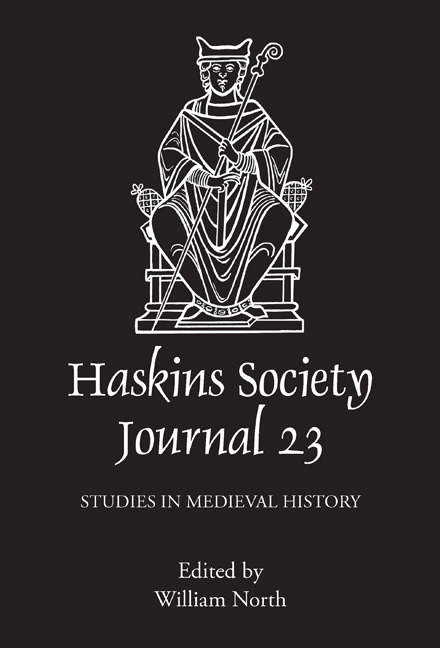Book contents
- Frontmatter
- Contents
- List of Figures
- Editor's Note
- Abbreviations
- 1 Francia and the History of Medieval Europe
- 2 Royal Control and the Disposition of Estates in Tenth-Century England: Reflections on the Charters of King Eadwig (955–959)
- 3 Denis Bethell Prize Essay: Frutolf of Michelsberg's Chronicle, the Schools of Bamberg, and the Transmission of Imperial Polemic
- 4 Manipulating Historical Memory: Cosmas on the Sees of Prague and Olomouc
- 5 Poetry and History: Baudry of Bourgueil, the Architecture of Chivalry, and the First Crusade
- Authors' Preface to Chapters 6 and 7
- 6 Men and Masculinities at the Courts of the Anglo-Norman Kings in the Ecclesiastical History of Orderic Vitalis
- 7 Men and Masculinities in William of Malmesbury's presentation of the Anglo-Norman Court
- 8 The Personnel of Comital Administration in Greater Anjou, 1129–1151
- 9 The Murder of Gilbert the Forester
- 10 The Object as Subject in Medieval Art
10 - The Object as Subject in Medieval Art
Published online by Cambridge University Press: 05 November 2014
- Frontmatter
- Contents
- List of Figures
- Editor's Note
- Abbreviations
- 1 Francia and the History of Medieval Europe
- 2 Royal Control and the Disposition of Estates in Tenth-Century England: Reflections on the Charters of King Eadwig (955–959)
- 3 Denis Bethell Prize Essay: Frutolf of Michelsberg's Chronicle, the Schools of Bamberg, and the Transmission of Imperial Polemic
- 4 Manipulating Historical Memory: Cosmas on the Sees of Prague and Olomouc
- 5 Poetry and History: Baudry of Bourgueil, the Architecture of Chivalry, and the First Crusade
- Authors' Preface to Chapters 6 and 7
- 6 Men and Masculinities at the Courts of the Anglo-Norman Kings in the Ecclesiastical History of Orderic Vitalis
- 7 Men and Masculinities in William of Malmesbury's presentation of the Anglo-Norman Court
- 8 The Personnel of Comital Administration in Greater Anjou, 1129–1151
- 9 The Murder of Gilbert the Forester
- 10 The Object as Subject in Medieval Art
Summary
A few years ago, a distinguished scholar of Renaissance art and a leading theorist confronted me with the question: ‘Why do medievalists still maintain a nostalgia for the object?’ It was at the moment when the ‘visual turn’ was veering onto the ramp of phenomenology, so I immediately understood the point he was making: at a time when most other art historians were privileging perception and reception, medievalists seemed hopelessly to be focused on art's material presence and physical attraction and thus to operate in an intellectual culture that did not engage current theoretical debates.
This was, of course, the impression of someone outside the field. If medievalists were, in fact, pining for precious objects, they were doing so only after centuries during which the unique nature of the things that they study had largely been made to vanish as these objects were subsumed into other forms of artistic production; first, following the European revolutions, when church treasuries were emptied into museums and private collections and thus transformed into ‘objets d'art’ and then, during the past hundred years, when they were further ‘de-objectified’ by a prevailing interest in iconography – with its contingent search for models – that elided the material differences among works.
- Type
- Chapter
- Information
- The Haskins Society Journal 232011. Studies in Medieval History, pp. 205 - 228Publisher: Boydell & BrewerPrint publication year: 2014



